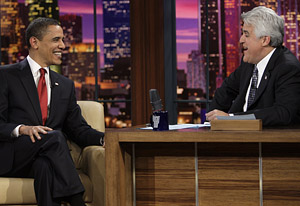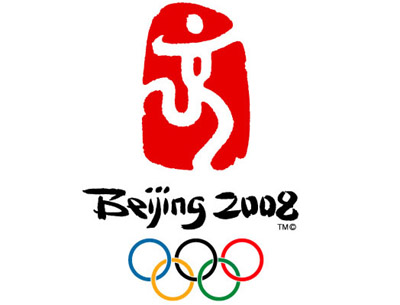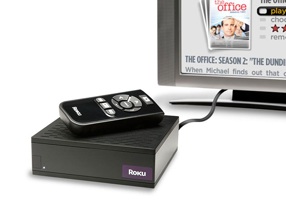 American Idol has been a huge success for the Fox TV network. Year after year at first place in the ratings, AI continues to dominate prime time TV. That kind of success yields substantial revenue. A 30-second spot on Idol nets Fox over $600,000. That and product placement deals with Coke, Ford, AT&T, iTunes and others makes this franchise a gold mine.
American Idol has been a huge success for the Fox TV network. Year after year at first place in the ratings, AI continues to dominate prime time TV. That kind of success yields substantial revenue. A 30-second spot on Idol nets Fox over $600,000. That and product placement deals with Coke, Ford, AT&T, iTunes and others makes this franchise a gold mine.
Earlier today I asked my Media & Society students why they think American Idol is such a hit with viewers and they offered up several very insightful responses.
- Viewers are able to participate in the potential rags-to-riches story line of contestants…seeing themselves as potentially rich and famous if they were just given an opportunity to compete.
- We enjoy seeing people make fools of themselves on TV. The Germans have a word for it…schadenfreude, which is translated as pleasure derived from the misfortunes of others.
- The large contestant pool means that our social network may allow us to know someone who knows someone who is a contestant. The old six-degrees-of-separation meme strikes again!
- And, the interactivity and audience participation provided by the text voting gives viewers/voters a sense of ownership.
I think the students came up with some very compelling explanations for the success of American Idol. It will be interesting to see if that success continues. In case you haven’t heard, the big news this season is the planned departure of the acerbic Simon Cowell. Cowell reportedly turned down $144 million per year to stay. Time will tell just how much Simon’s biting commentaries will be missed by fans of the show. What do you think? Is this the beginning of the end for American Idol?

 Last night President Obama made history when he became the first sitting president to appear on the Tonight Show. While Washington D.C. was embroiled in the AIG bonus scandal, our Chief Executive was discussing policy, and his bowling score, with Jay Leno in Hollywood, CA. Something about it all seemed slightly unseemly and a little bit strange… as though the leader of the free world was seeking the kind of exposure that late-night TV hosts typically provide to comedians and film stars. Usually “the press” travels to DC and the White House to interview the president. There’s a certain seriousness demanded by the office and the oval office that bestows a sense of gravity to the whole affair…a gravity that is sorely lacking on late-night TV.
Last night President Obama made history when he became the first sitting president to appear on the Tonight Show. While Washington D.C. was embroiled in the AIG bonus scandal, our Chief Executive was discussing policy, and his bowling score, with Jay Leno in Hollywood, CA. Something about it all seemed slightly unseemly and a little bit strange… as though the leader of the free world was seeking the kind of exposure that late-night TV hosts typically provide to comedians and film stars. Usually “the press” travels to DC and the White House to interview the president. There’s a certain seriousness demanded by the office and the oval office that bestows a sense of gravity to the whole affair…a gravity that is sorely lacking on late-night TV. According to a recent study published in Pediatrics, teens who watch more explicit sexual content on TV are twice as likely to become pregnant or father a child before they reach age 20.This is the first time that a study has actually shown a relationship between exposure to explicit content on TV and pregnancy. This is alarming when you consider that the US has double the teen pregnancy rate of other developing countries. It is particularly troubling now as the country has seen its first increase in teen pregnancy in 14 years.
According to a recent study published in Pediatrics, teens who watch more explicit sexual content on TV are twice as likely to become pregnant or father a child before they reach age 20.This is the first time that a study has actually shown a relationship between exposure to explicit content on TV and pregnancy. This is alarming when you consider that the US has double the teen pregnancy rate of other developing countries. It is particularly troubling now as the country has seen its first increase in teen pregnancy in 14 years.


 Viewing motion pictures in the comfort of your own home on your
Viewing motion pictures in the comfort of your own home on your 
 The best arguments appeal to both reason and emotion. But if you have to choose one over the other, data-supported arguments that appeal to logic and reason are usually preferable. And while the idea of math is frightening to many mass communication students, the preferred method of creating and sustaining a rational argument involves the use of statistical analysis. So whether you’re taking my Audience Research class, or Marketing Research, or you’re thinking about signing up for Sport Writing and Statistics class offered this fall…sooner or later you’ll be face to face with stats. But that doesn’t have to be a bad thing. Thinking and reasoning with numbers can be an extremely valuable skill set to bring to a potential employer, and once you get over the initial “fear of math” you may even find that you like it.
The best arguments appeal to both reason and emotion. But if you have to choose one over the other, data-supported arguments that appeal to logic and reason are usually preferable. And while the idea of math is frightening to many mass communication students, the preferred method of creating and sustaining a rational argument involves the use of statistical analysis. So whether you’re taking my Audience Research class, or Marketing Research, or you’re thinking about signing up for Sport Writing and Statistics class offered this fall…sooner or later you’ll be face to face with stats. But that doesn’t have to be a bad thing. Thinking and reasoning with numbers can be an extremely valuable skill set to bring to a potential employer, and once you get over the initial “fear of math” you may even find that you like it.